Ao dai is a Vietnamese traditional costume imbued with its national cultural quintessence. For generations, the dress has become a tangible cultural object bearing the symbol of the Vietnamese and is known about by foreigners. Due to its beauty, charm and elegance many people prefer to wear ao dai on festive events, especially during the traditional lunar New Year holidays or Tet in Vietnamese.
According to designer Trinh Bich Thuy, who has more than ten years of designing ao dai, in the 1980s, there were only a few shops in Hanoi making ao dai for people from the upper class to wear in wedding parties. In recent years, ao dai has become more popular, and wearing an ao dai on festive days has become the habit of a majority of Vietnamese people.
The wearers, depending on their taste, select an ao dai that fits their body and helps embellish their feminine beauty, gentleness and charm. They often wear an ao dai when going to a pagoda, visiting relatives and friends at Tet, strolling on the streets, or for taking pictures.
In recent years, ao dai has become a popular costume for women during Tet.
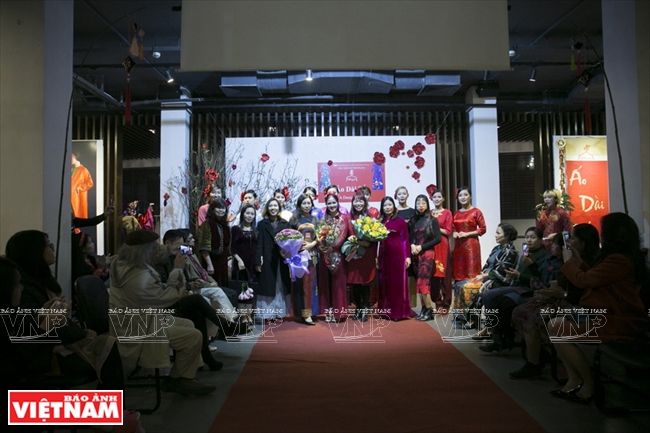
Designers of the "Ao dai for Tet" show.
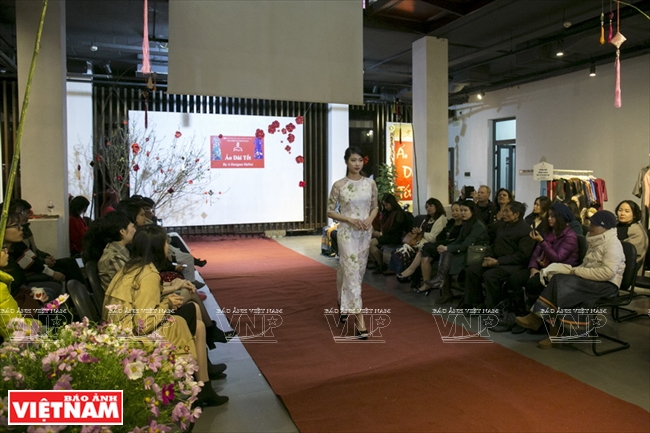
The show attracts local and foreign audience.
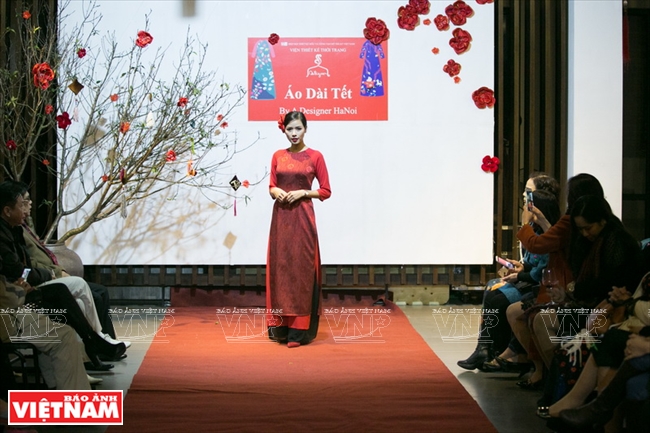
"Ao dai for Tet" shows the Vietnamese traditional dress in different periods.
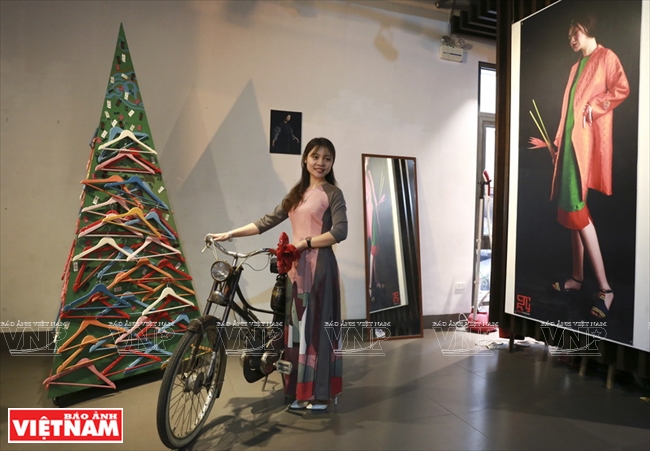
Visitors can pose at the showroom. |
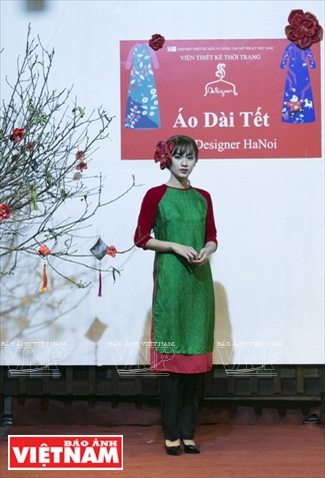
The ao dai collection “Tet with Trinh” by Trinh Fashion. |
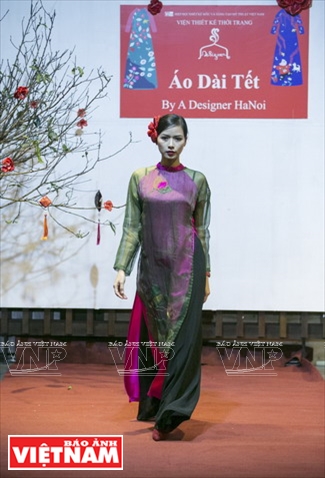
An ao dai of the collection "Tet with Trinh". |
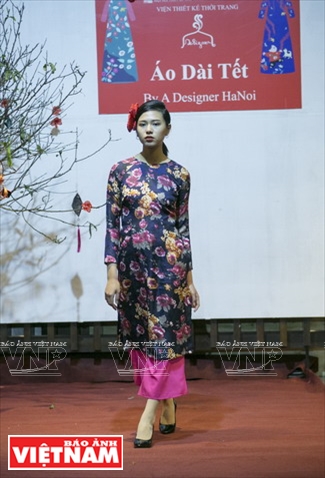
Floral patterns are often used in ao dai for Tet. |
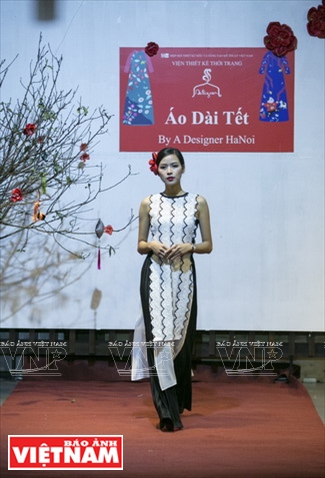
An ao dai with simple design still can show
the charm of the wearer. |
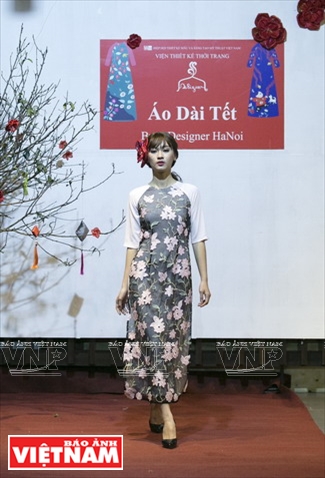
An ao dai of the collection "Spring Colours" by Yen Phi.
. |
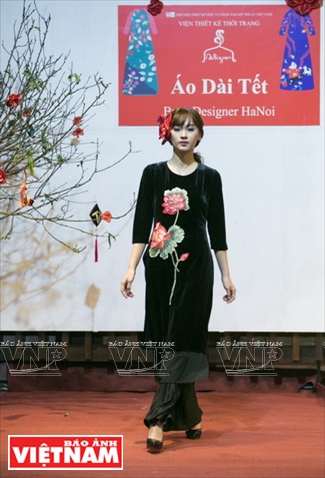
Lotus pattern is a favourite for middle-aged wearer of ao dai. |
Middle-aged women like to wear traditional ao dai with long flaps and a loose neckline, with silk trousers, whichensures their charm and secrecy. Meanwhile, young girls like modern ao dai, which are designed creatively with both traditional and modern features that matches a modern life. The renovated ao dai is made with brocade, velvet or embroidered silk, with either a skirt or fit trousers, which highlights the wearers’ noble beauty and personal character.
Since wearing ao dai on New Year holidays has become more popular, designers have more room to make the dress in diverse forms, yet they still maintain its traditional characteristics. One way to preserve the long-standing traditional features of ao dai is using specific designs and imbued with Vietnamese identities.
On the ao dai flaps, designers use techniques to stylize patterns from daily life such as peach blossoms, apricot flowers and birds and plants, which represent spring. Theyalso embroider lucky letters such as “good fortune”, “wealth” and “happiness” on the dress flaps, with the hope that the wearers will enjoy a new, happy and prosperous year.
Ao dai is also considered an elegant fashion product reflecting the beauty of the of ancient Trang An women, so designers print or embroider pictures of old houses or streets of Hanoi on the dress.
Life is changing for the better, and styles also change. Images of the ao dai can be seen more on the streets and public venues, especially during Tet, helping to embellish the traditional cultural beauty of the Vietnamese people.
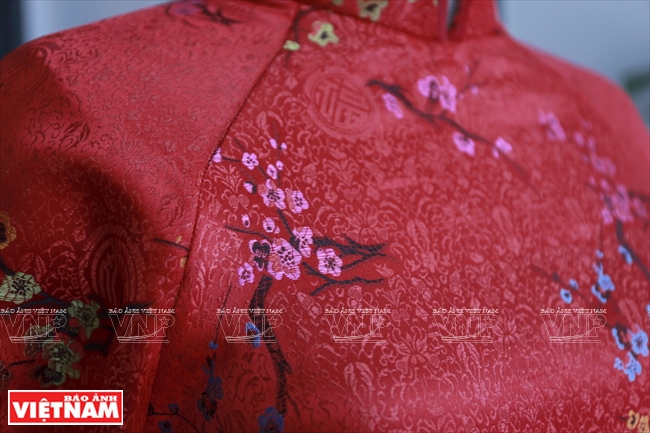
An ao dai embroidered with the pattern of peach blossoms - the symbol of spring.
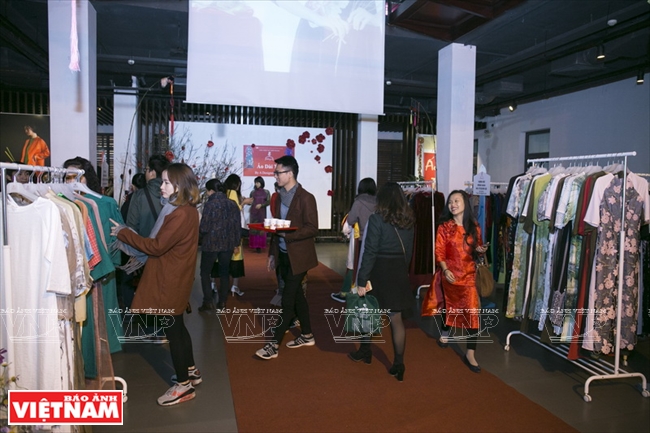
Many women seek a suitable ao dai to wear during Tet.
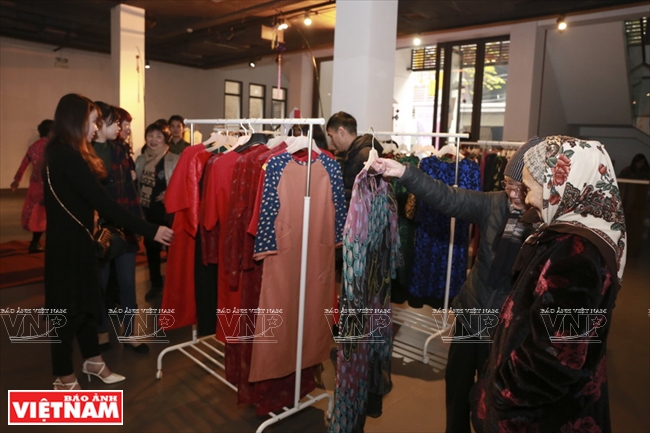
Ao dai of different designs are displayed in the "Ao dai for Tet" show.
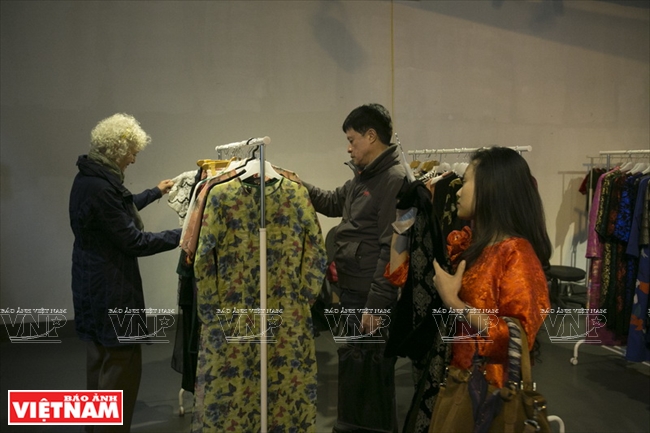
Foreigners are also interested in the Vietnamese traditional dress. |
|
A designer Ha Noi - a group of Hanoi designers - organised in January a show entitled "Ao dai for Tet" at the Hanoi old Quarter Culture Centre to showcase the subtle beauty of the Vietnamese traditional dress. |
Story: Ngan Ha - Photo: Khanh Long